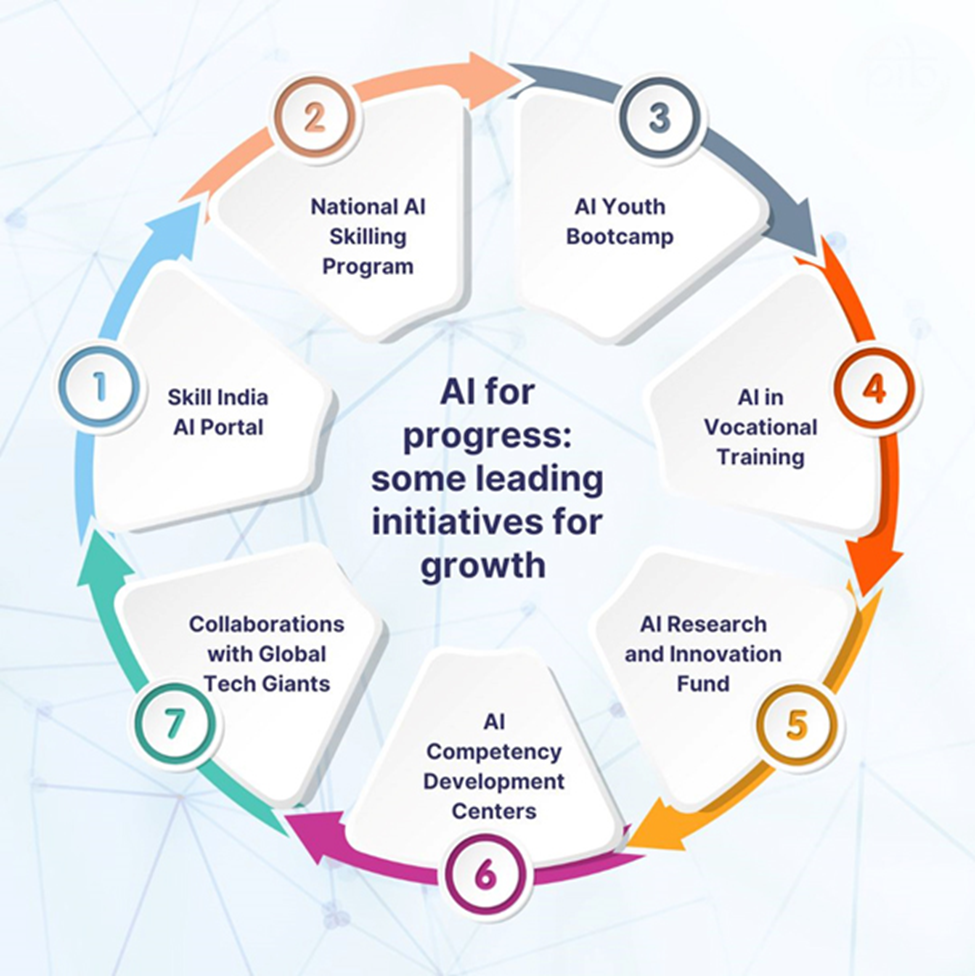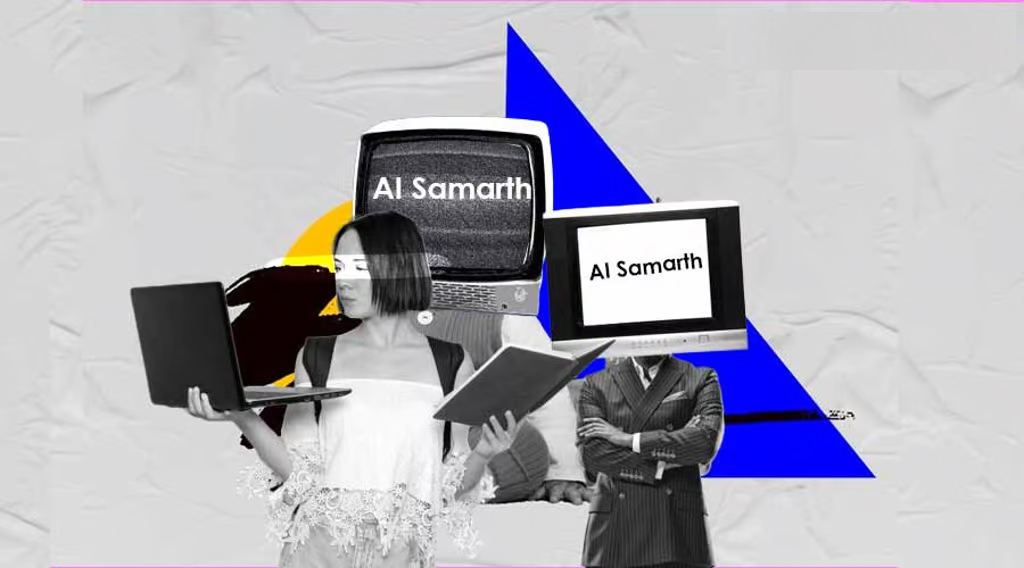Context:
The Central Square Foundation (CSF), in partnership with Google, has launched AI Samarth, an ambitious initiative aimed at providing AI literacy to over five million students, parents, and teachers in India within the next four years.
- This initiative, part of a broader effort to integrate AI into the education sector, is expected to foster AI awareness and promote its responsible use at the grassroots level.
Objective behind
AI literacy is essential for effectively using AI in education. A survey conducted by CSF found that children, even from low-income households, are engaging with technology. AI Samarth aims to empower them not just as users but as active co-creators.
- It focuses particularly on government and low-fee private schools, ensuring that underserved communities are equipped to use AI as a tool for learning and development.

Addressing AI Literacy in Schools
- According to the report of IBEF, India had 41.38 million students enrolled in higher education in the year 2020-21 and the size of the online education market in India is expected to grow by US$ 2.28 billion during 2021-2025.
- AI Samarth aims to take advantage of this by moving students through four key stages of AI literacy: awareness, understanding, application, and development.
- The integration of AI in education has reshaped traditional learning methods and personalized education by adapting content to the student’s level.
- AI-powered automation has also reduced educators' administrative burdens, allowing them to focus more on mentoring and teaching.
- Gamification, driven by AI, is another transformative trend. It uses game-like elements to make learning more engaging. The global market for gamification in education is projected to reach USD 3.5 billion by 2025, growing at a CAGR of 32%.
Overcoming Challenges
India’s education system faces several challenges in implementing AI literacy at scale, with 1.5 million schools and 265 million students to serve. CSF plans to tackle these by developing a comprehensive AI curriculum and open-source content libraries tailored to the needs of Indian students and educators.
- A significant challenge in AI education is the rapid pace of technological change. While AI evolves, the core principles of equity, safety, and ethical use remain vital.
- There are concerns that students could become overly reliant on AI tools, potentially hindering genuine learning and critical thinking. With the availability of platforms like ChatGPT, some may resort to using AI to complete assignments, raising the risk of academic dishonesty.
- Additionally, current AI tools may not be fully inclusive, often lacking cultural diversity in the resources they provide.
- Another significant risk is the potential compromise of data security and students' privacy, particularly in the absence of robust safeguards against these emerging technologies.
Government Initiatives in AI and Emerging Technologies
The Government of India has recognized Artificial Intelligence (AI) as a driving force for future economic growth, employment, and innovation. Several initiatives have been launched to harness AI’s potential in various sectors, while also preparing the workforce for the technological revolution.
- Future Skills PRIME initiative aims at reskilling and upskilling IT manpower in 10 emerging technologies, including AI, Blockchain, Robotics, Big Data, IoT, and Cybersecurity. This initiative is designed to ensure the country remains competitive in the global technology landscape.
- Visvesvaraya PhD Scheme focuses on increasing the number of PhDs in Electronics System Design, Manufacturing (ESDM), IT, and AI sectors. This initiative is vital for advancing research and innovation in AI and related fields.
- Responsible AI for Youth: Launched on July 30, 2022, Responsible AI for Youth engages students from government schools, empowering them to become part of India’s skilled workforce, with an emphasis on inclusivity.
- YUVAi (Youth for Unnati and Vikas with AI) program equips students in Classes 8 to 12 with AI and social skills, focusing on key areas like Agriculture, Healthcare, Education, Environment, and Law.
- National Education Policy (NEP) 2020 highlights the importance of integrating AI into the curriculum. In alignment with this, the Central Board of Secondary Education (CBSE) introduced AI in its affiliated schools in 2019 to nurture AI proficiency from a young age.
- NITI Aayog’s National Strategy for Artificial Intelligence (NSAI) underscores five key sectors for AI applications: Healthcare, Agriculture, Education, Smart Cities and Infrastructure, and Smart Mobility and Transportation. These sectors are expected to benefit most from AI in solving societal challenges, improving productivity, and enhancing the quality of life
Way forward:
The responsible use of AI is critical. Educational institutions must adopt proactive strategies to mitigate risks such as AI-based cheating, including using audio and video assessments. This approach ensures that AI is applied ethically while maximizing its potential to revolutionize education in India.
By focusing on personalized learning, enhancing teaching methodologies, and addressing sector-specific challenges, AI Samarth has the potential to transform India’s educational landscape. It aims not only to make students literate in AI but also to encourage them to become innovators in the field.
Conclusion
AI Samarth represents a significant step forward in bridging the digital divide and ensuring AI literacy reaches even the most underserved communities in India. By empowering students, teachers, and parents with AI knowledge, the initiative aims to create a progressive educational ecosystem, contributing to the growth of India’s future workforce and encouraging the ethical and responsible use of AI in education
|
Probable questions for UPSC Mains exam: Critically assess the potential benefits and risks of integrating AI into school curricula. How can the government and educational institutions mitigate the risks, such as academic dishonesty, while maximizing the benefits of AI-powered learning? |
Source: PIB








